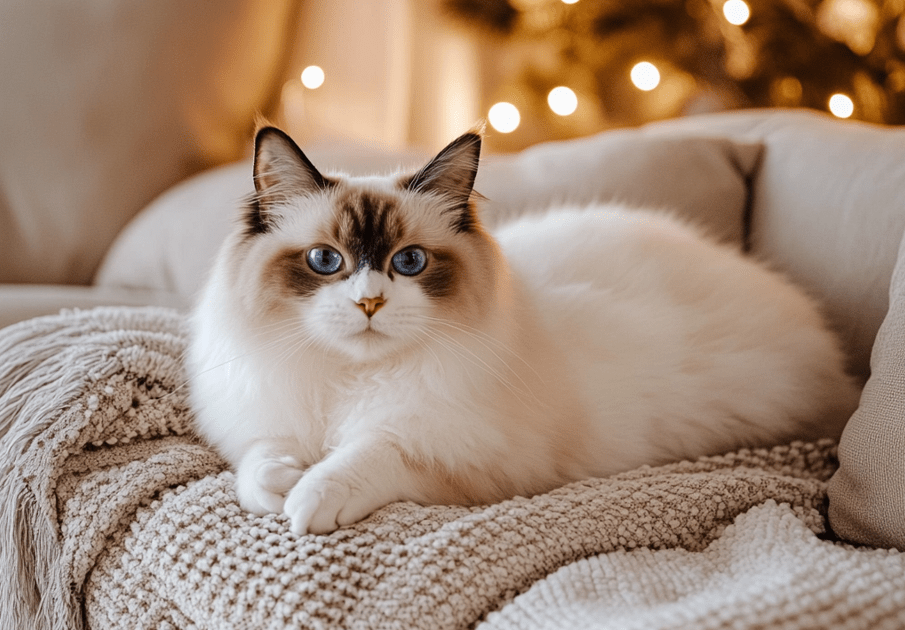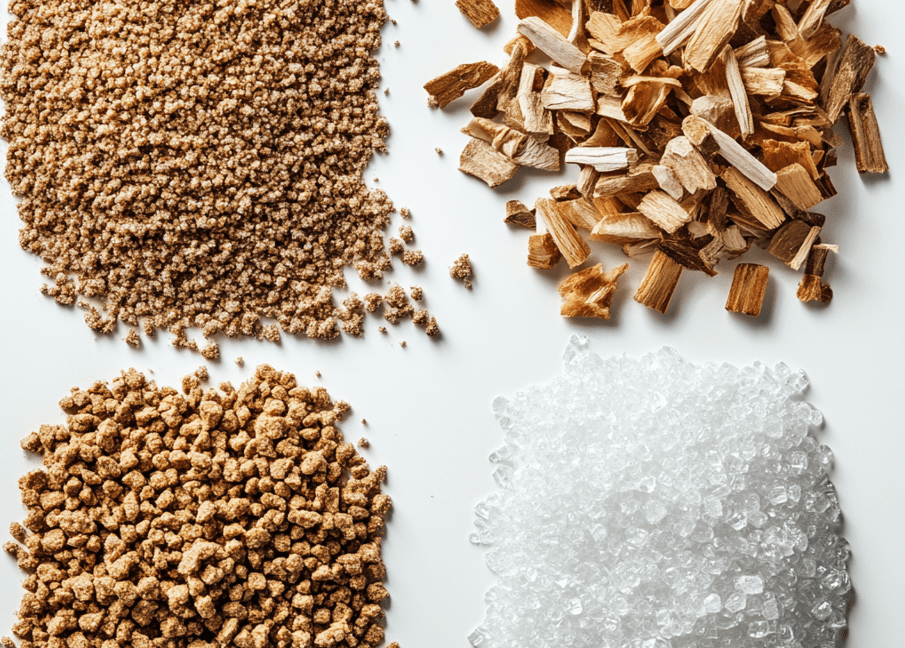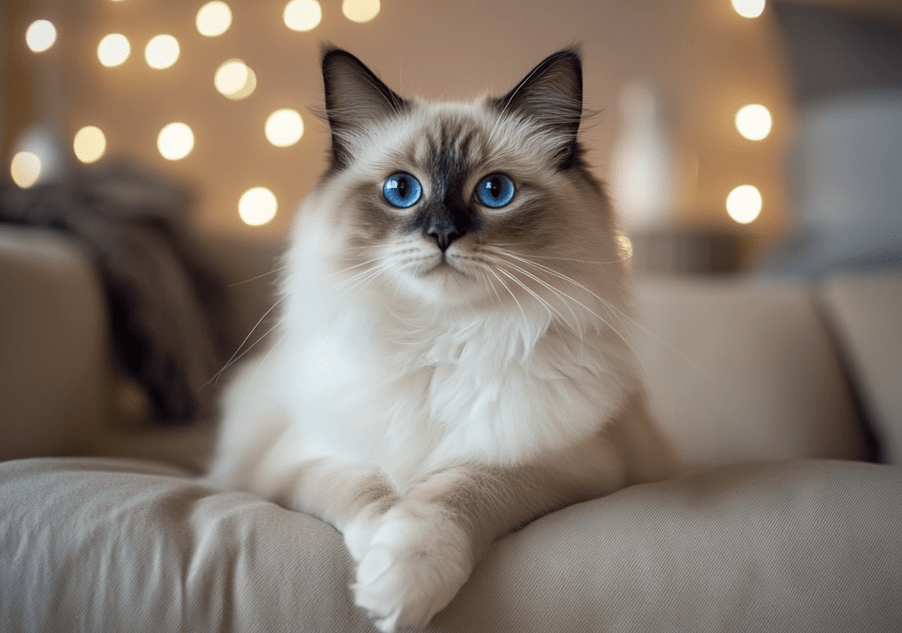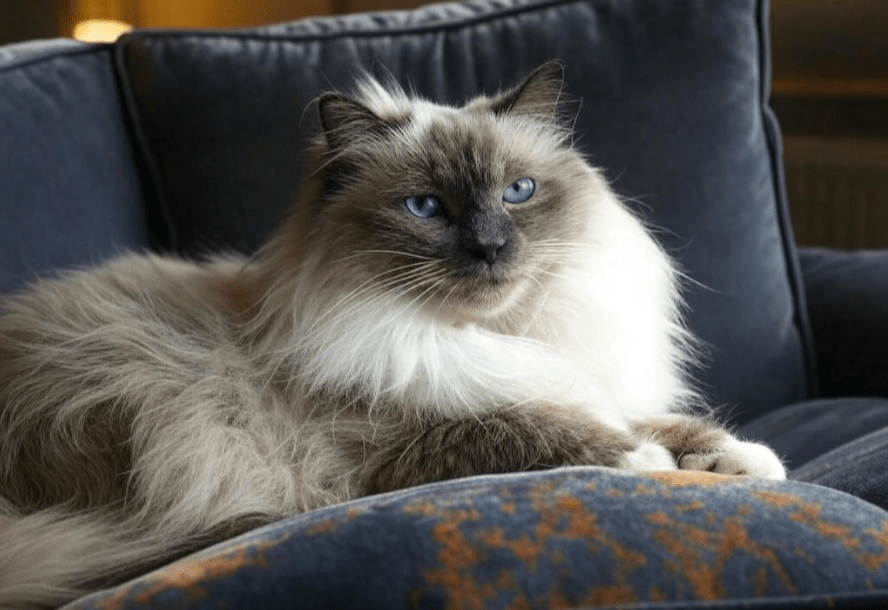
Ragdoll cats, with their striking blue eyes and plush, silky coats, are beloved for their gentle temperament and affectionate nature. As a Ragdoll cat owner, ensuring your feline friend thrives starts with proper nutrition. However, many well-meaning owners make feeding mistakes that can impact their Ragdoll cat’s health and well-being. This comprehensive guide explores five common Ragdoll cat feeding mistakes, offering practical solutions to help you provide the best care for your furry companion. By avoiding these pitfalls, you can support your Ragdoll’s long-term health and happiness.
Why Proper Feeding Matters for Ragdoll Cats
Ragdolls are a large, semi-longhaired breed known for their relaxed demeanor and tendency to go limp when held, earning them the “Ragdoll” name. Their unique physiology and calm personality mean they have specific dietary needs. Feeding mistakes can lead to obesity, urinary issues, or nutrient deficiencies, all of which can compromise their quality of life. Understanding these mistakes and how to correct them is crucial for keeping your Ragdoll cat healthy and vibrant.
Let’s dive into the five most common feeding mistakes Ragdoll owners make and how to avoid them.
Overfeeding and Ignoring Portion Control
The Problem
Ragdolls are prone to weight gain due to their laid-back nature and moderate activity levels. Many owners overestimate portion sizes or leave food out all day (free-feeding), leading to overeating. Excess weight can strain a Ragdoll’s joints, increase the risk of diabetes, and exacerbate conditions like feline lower urinary tract disease (FLUTD).
Why It Happens
Misreading Food Labels: Cat food packaging often provides vague feeding guidelines that don’t account for a Ragdoll’s size or activity level.
Emotional Feeding: Owners may offer extra food or treats to bond with their affectionate Ragdoll.
Free-Feeding Habits: Leaving a bowl of kibble out encourages grazing, which can lead to overconsumption.
The Solution
Measure Portions: Use a kitchen scale or measuring cup to provide precise portions based on your Ragdoll’s weight and caloric needs. Consult your veterinarian to determine the ideal daily calorie intake (typically 20–30 calories per pound of body weight for a healthy adult cat).
Follow a Feeding Schedule: Feed your Ragdoll two to three meals per day instead of free-feeding. This helps regulate their intake and mimics their natural hunting rhythm.
Limit Treats: Treats should account for no more than 10% of your cat’s daily calories. Opt for healthy options like freeze-dried meat treats.
Monitor Weight: Weigh your Ragdoll monthly and check their body condition score (BCS). You should feel their ribs with slight pressure and see a defined waistline when viewed from above.
Pro Tip
Use puzzle feeders or interactive toys to slow down eating and provide mental stimulation, which is especially beneficial for indoor Ragdolls with lower activity levels.
Choosing Low-Quality Cat Food
The Problem
Not all cat foods are created equal. Many commercial brands contain fillers like corn, wheat, or soy, which provide little nutritional value and can lead to digestive issues or allergies in Ragdolls. Low-quality diets may also lack essential nutrients like taurine, which is critical for heart and eye health.

Why It Happens
Budget Constraints: High-quality cat food can be expensive, leading some owners to opt for cheaper brands.
Lack of Awareness: Owners may not realize that “complete and balanced” claims on labels don’t guarantee optimal nutrition.
Marketing Misleads: Flashy packaging or buzzwords like “natural” can obscure poor ingredient quality.
The Solution
Read Ingredient Lists: Choose foods where the first ingredient is a named meat source (e.g., “chicken” or “salmon”) rather than by-products or fillers. Avoid artificial preservatives like BHA or BHT.
Prioritize Wet Food: Ragdolls are prone to urinary issues, and wet food provides hydration, reducing the risk of crystals or stones. Aim for a diet that includes high-quality canned or pouched food.
Check for AAFCO Approval: Ensure the food meets the Association of American Feed Control Officials (AAFCO) standards for “complete and balanced” nutrition.
Consider Breed-Specific Needs: Ragdolls benefit from foods with high protein, moderate fat, and low carbohydrates to support their muscle mass and prevent obesity.
Pro Tip
Rotate protein sources (e.g., chicken, turkey, fish) to provide variety and reduce the risk of food sensitivities. Consult your vet before making significant dietary changes.
Neglecting Hydration Needs
The Problem
Ragdolls are susceptible to urinary tract issues, such as cystitis or bladder stones, which can be exacerbated by inadequate water intake. Dry kibble diets, while convenient, provide minimal moisture, leaving Ragdolls at risk of dehydration if they don’t drink enough water.
Why It Happens
Reliance on Dry Food: Many owners feed exclusively dry kibble, which contains only 10–12% moisture compared to 70–80% in wet food.
Picky Drinking Habits: Ragdolls may avoid stagnant water or dislike the taste of tap water.
Inconvenient Water Access: Water bowls placed in noisy or high-traffic areas may deter drinking.
The Solution
Incorporate Wet Food: As mentioned, wet food is a primary source of hydration. Feed at least 50% of your Ragdoll’s diet as canned or pouched food to boost moisture intake.
Use a Cat Fountain: Ragdolls are often attracted to running water. A pet water fountain encourages drinking and keeps water fresh.
Offer Multiple Water Stations: Place clean, wide, shallow bowls in quiet areas of your home. Refresh water daily and clean bowls regularly to prevent bacterial buildup.
Flavor Water Sparingly: If your Ragdoll is reluctant to drink, try adding a small amount of low-sodium chicken broth or tuna juice to their water (consult your vet first).
Pro Tip
Monitor your Ragdoll’s litter box habits. Infrequent urination or straining could indicate a urinary issue, requiring immediate veterinary attention.
Ignoring Life Stage Nutritional Needs
The Problem
Ragdolls have different nutritional requirements at various life stages—kitten, adult, and senior. Feeding a one-size-fits-all diet can lead to deficiencies or excesses. For example, kittens need higher calories and nutrients for growth, while senior Ragdolls may require joint-supporting supplements or lower-calorie foods to prevent weight gain.
Why It Happens
Convenience: Owners may feed the same food to all cats in a multi-cat household, regardless of age.
Lack of Knowledge: Some owners are unaware that Ragdolls’ needs change as they age.
Resistance to Change: Cats can be finicky, and owners may hesitate to switch foods for fear of rejection.
The Solution
Kitten Stage (0–12 Months): Feed a high-protein, high-calorie kitten formula to support rapid growth and development. Look for foods with DHA for brain and vision health.
Adult Stage (1–7 Years): Transition to an adult maintenance diet with balanced protein, fat, and carbohydrates. Focus on weight management to prevent obesity.
Senior Stage (8+ Years): Choose senior-specific formulas with joint-supporting ingredients like glucosamine and chondroitin. Reduced-calorie options help manage weight, and increased fiber aids digestion.
Gradual Transitions: When switching foods, mix the new food with the old over 7–10 days to prevent digestive upset.
Pro Tip
Regular vet checkups (every 6–12 months) can help tailor your Ragdoll’s diet to their current life stage and health status.
Overlooking Food Allergies or Sensitivities
The Problem
Ragdolls can develop food allergies or sensitivities, leading to symptoms like itchy skin, vomiting, or diarrhea. Common allergens include chicken, fish, dairy, or grains. Ignoring these issues can cause chronic discomfort and long-term health problems.
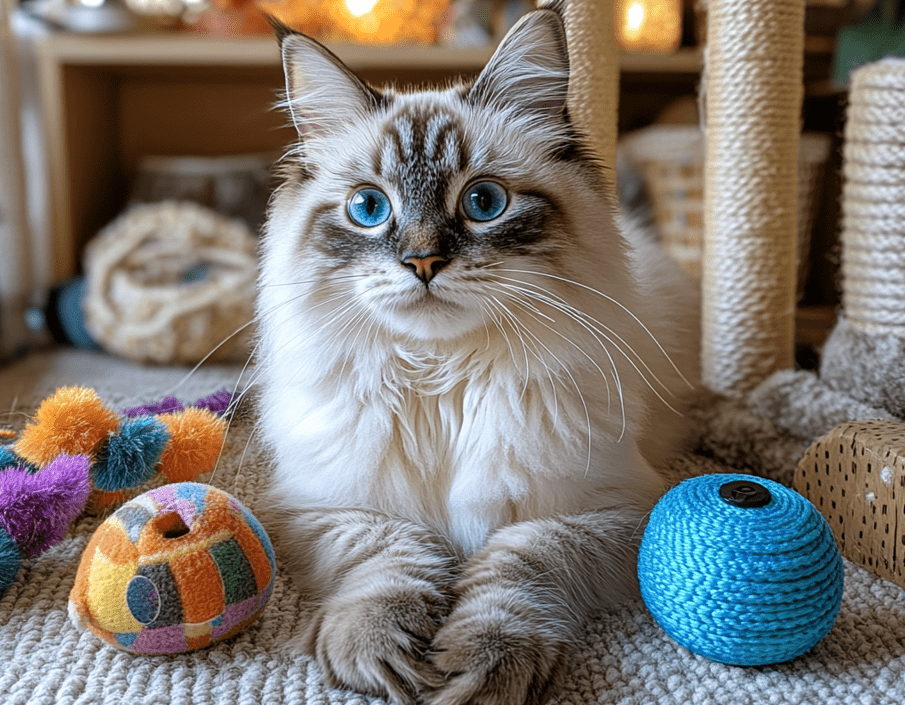
Why It Happens
Misdiagnosis: Owners may attribute symptoms to other causes, like fleas or stress, rather than diet.
Trial and Error: Identifying allergies requires patience, and some owners give up too soon.
Limited Ingredient Awareness: Owners may not realize that treats, table scraps, or flavored medications can trigger reactions.
The Solution
Monitor Symptoms: Watch for signs of food allergies, such as excessive scratching, ear infections, or gastrointestinal upset. Keep a food diary to track symptoms and diet changes.
Try an Elimination Diet: Work with your vet to switch to a limited-ingredient diet (e.g., novel proteins like duck or venison) for 8–12 weeks to identify triggers.
Avoid Table Scraps: Human foods like dairy or seasoned meats can cause digestive issues or allergic reactions in Ragdolls.
Choose Hypoallergenic Foods: If allergies are confirmed, opt for hydrolyzed protein or grain-free foods designed for sensitive cats.
Pro Tip
If your Ragdoll shows persistent symptoms, ask your vet about allergy testing or a referral to a veterinary dermatologist for specialized care.
Additional Tips for Feeding Your Ragdoll Cat
Consult Your Veterinarian: Every Ragdoll is unique. Your vet can recommend a diet tailored to your cat’s health, weight, and lifestyle.
Store Food Properly: Keep dry food in airtight containers to maintain freshness and prevent contamination. Refrigerate opened wet food and use within 2–3 days.
Avoid Toxic Foods: Never feed your Ragdoll chocolate, onions, garlic, grapes, or xylitol-containing products, as these are toxic to cats.
Encourage Exercise: Pair a balanced diet with playtime to keep your Ragdoll active. Wand toys, laser pointers, and climbing trees are great for engaging their playful side.
Conclusion
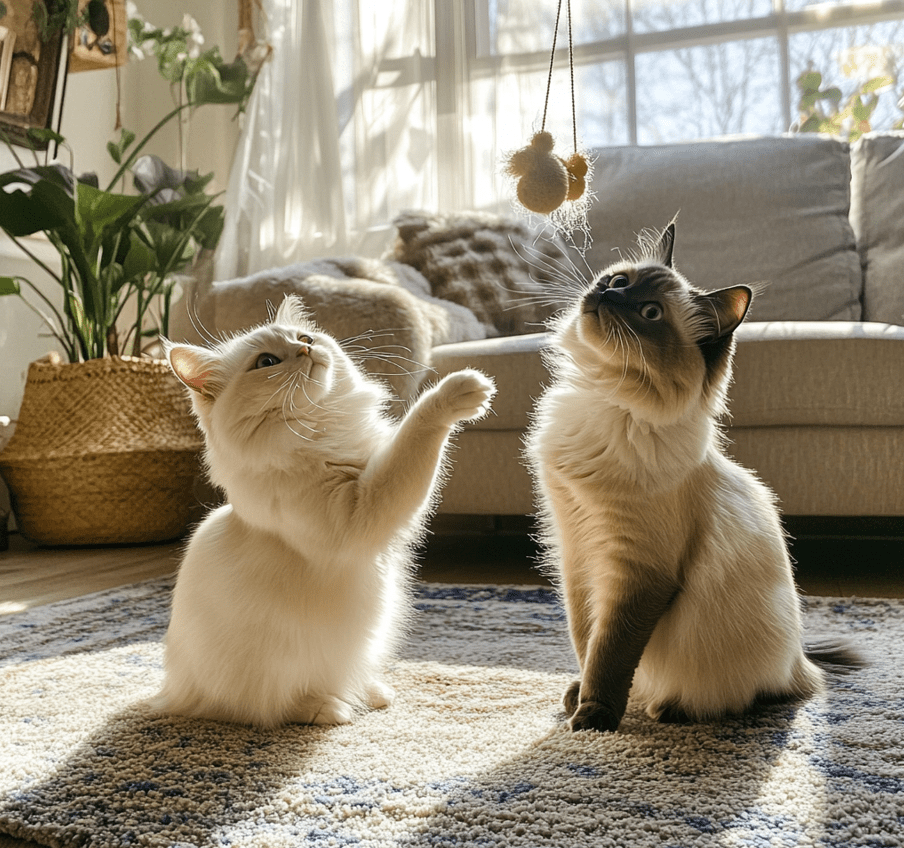
Feeding your Ragdoll cat properly is one of the most important ways to ensure their health and happiness. By avoiding these five common mistakes—overfeeding, choosing low-quality food, neglecting hydration, ignoring life stage needs, and overlooking allergies—you can provide a balanced, nutritious diet that supports their unique needs. Always prioritize high-quality ingredients, proper portion control, and regular veterinary guidance to keep your Ragdoll thriving.
With a little knowledge and attention, you can make mealtime a healthy and enjoyable experience for your beloved Ragdoll cat. Share your own feeding tips or questions in the comments below, and let’s help every Ragdoll live their best life!


